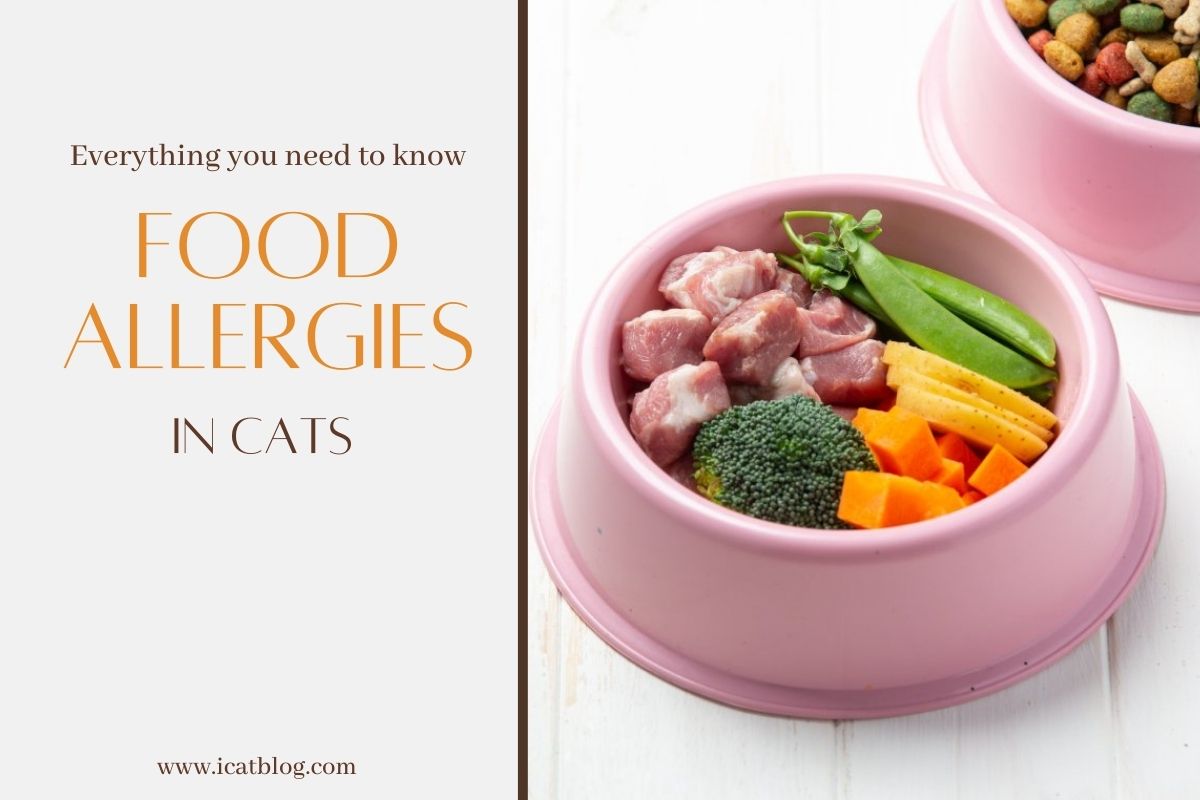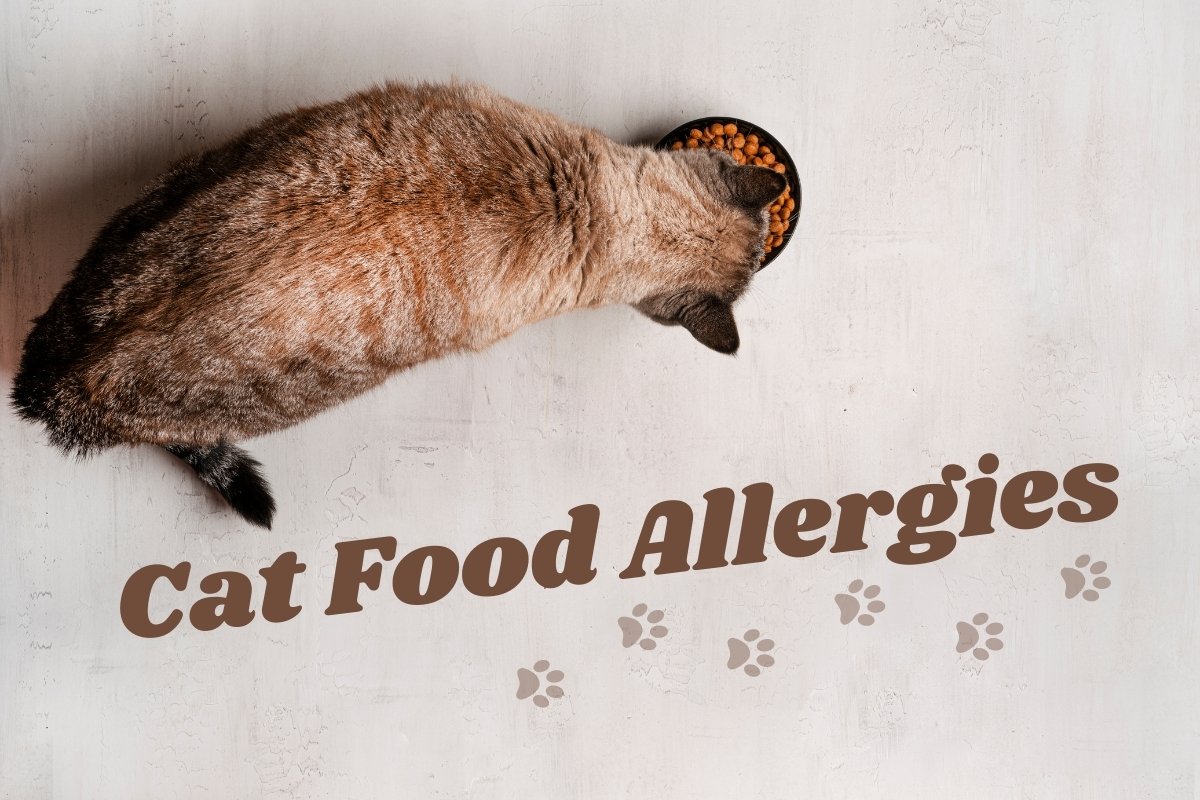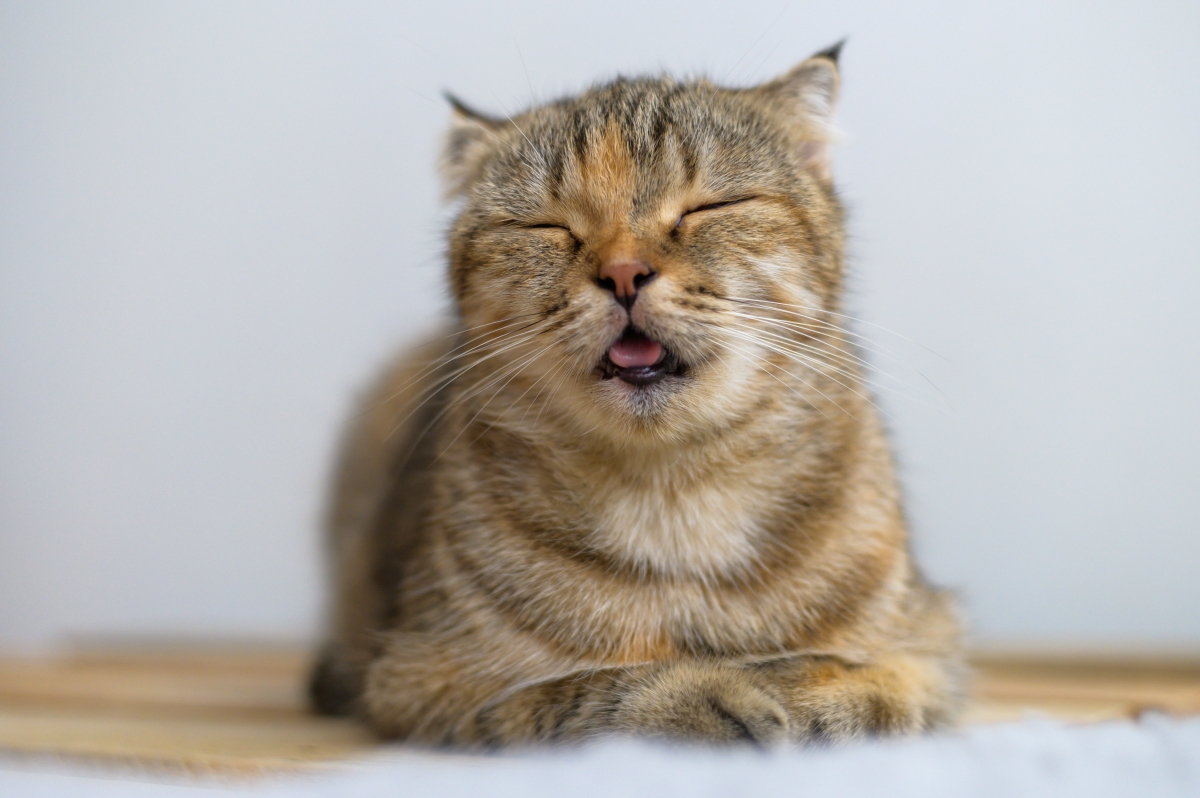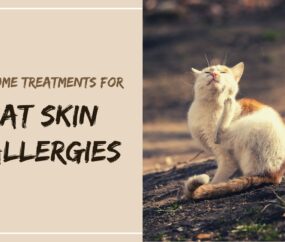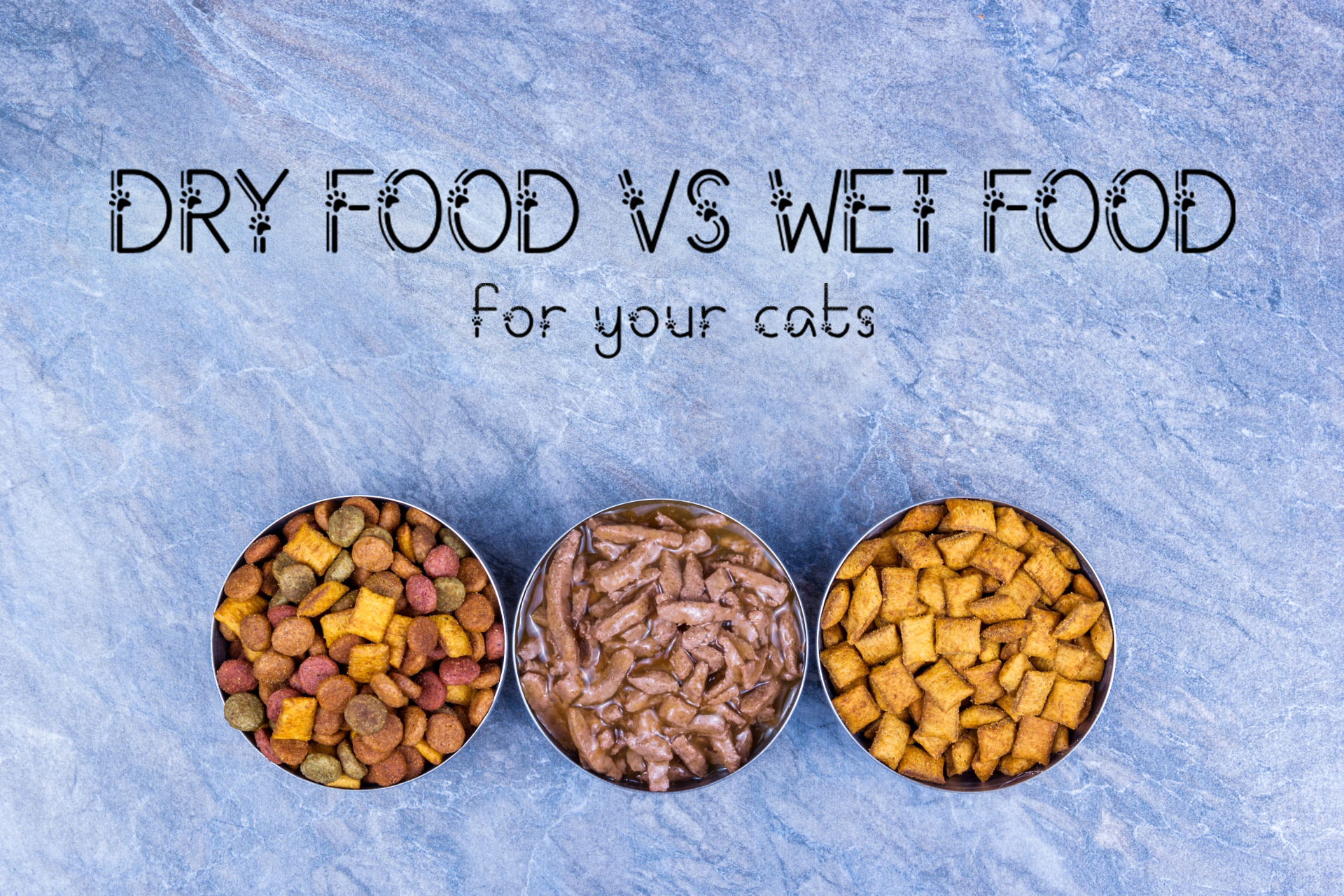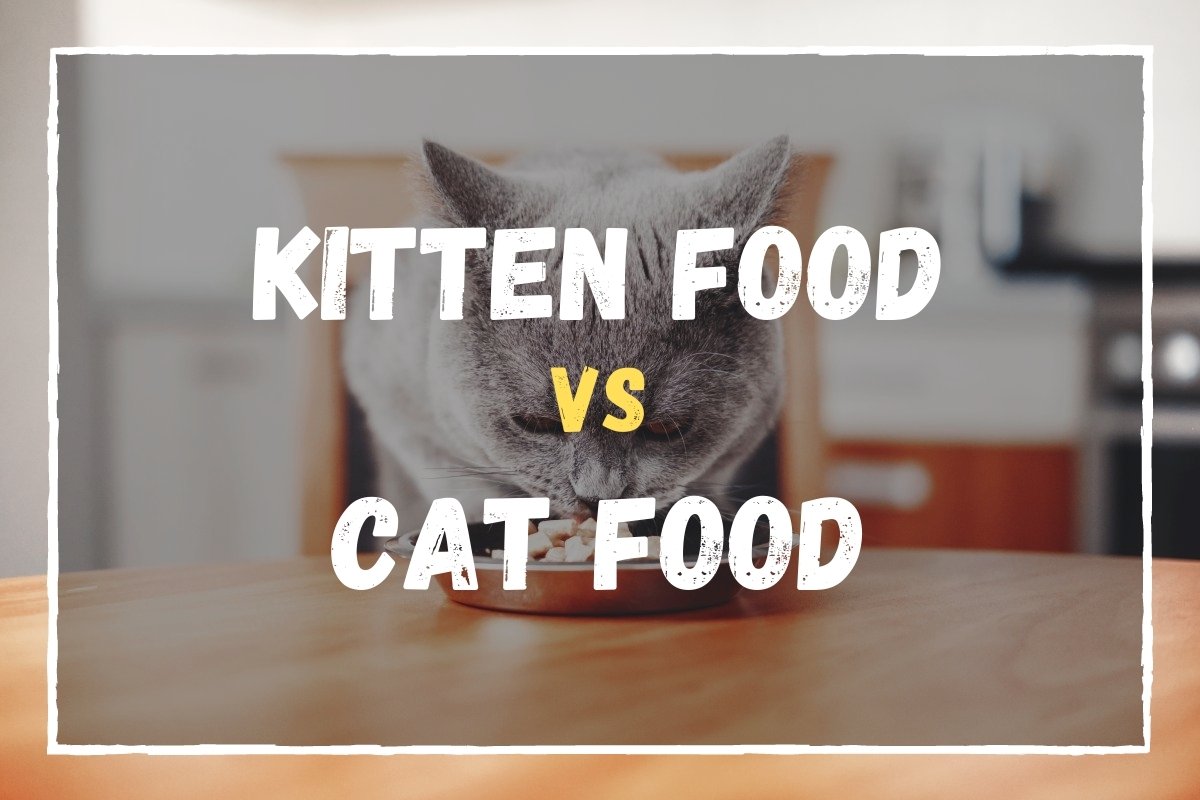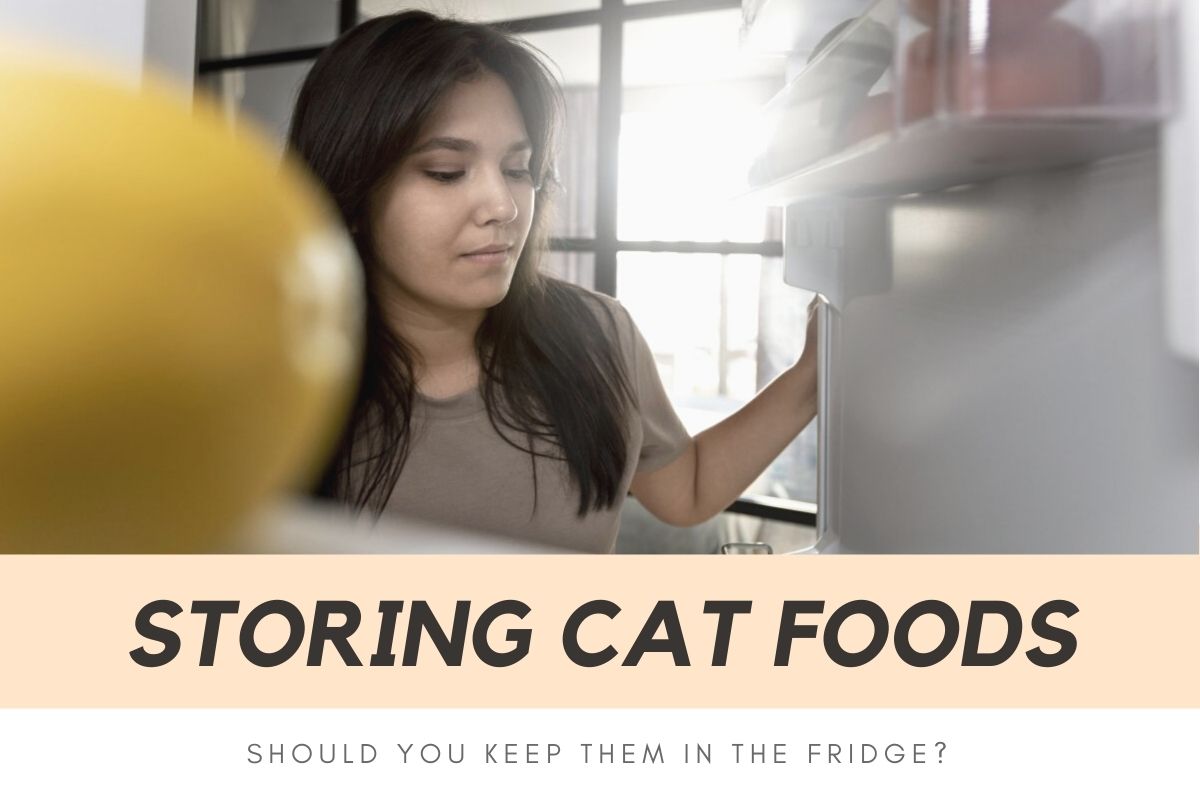One of the many tasks of the average pet owner includes the regular feeding of their pet. Pets can get cranky and pushy when not fed at their desired time; after all, they are alive just like us and require food to survive. And just like us, these animals cannot eat certain types of food due to certain allergies. Food allergies in cats are common, and many cats suffer from consuming & digesting various foods.
What are food allergies?
The actual term “food allergy” is used to describe an abnormal reaction to foreign protein present inside the food, which is usually just a tiny amount of a specific ingredient present in foods such as beef, fish & other dairy products. Food allergies in cats directly result from the immune system responding to the particular protein found within the diet.
Food allergies in cats are not easy to diagnose; they are difficult to assess and problematic because there are no allergy-specific tests available in the market and cat food allergy symptoms aren’t usually specific to one allergy. Scientists and researchers understand how food allergies in cats occur but do not know why the cat reacts to this food during the allergic reaction.
What causes food allergies in cats?
As per the name, food allergies in cats are caused by the food the cats eat. The contents of their diet and its ingredients decide whether the food is safe to eat for the cat or whether it will lead to an allergic reaction. The triggers for food allergies in cats are inconsistent.
Sometimes the cat will eat multiple meals of the same diet before displaying any cat food allergy. Other times, even the slightest amount of a certain food may cause a severe allergic reaction. It is unclear why some cats develop food allergies, and others do not. The breed, age & maybe even genetics can cause food allergies in cats.
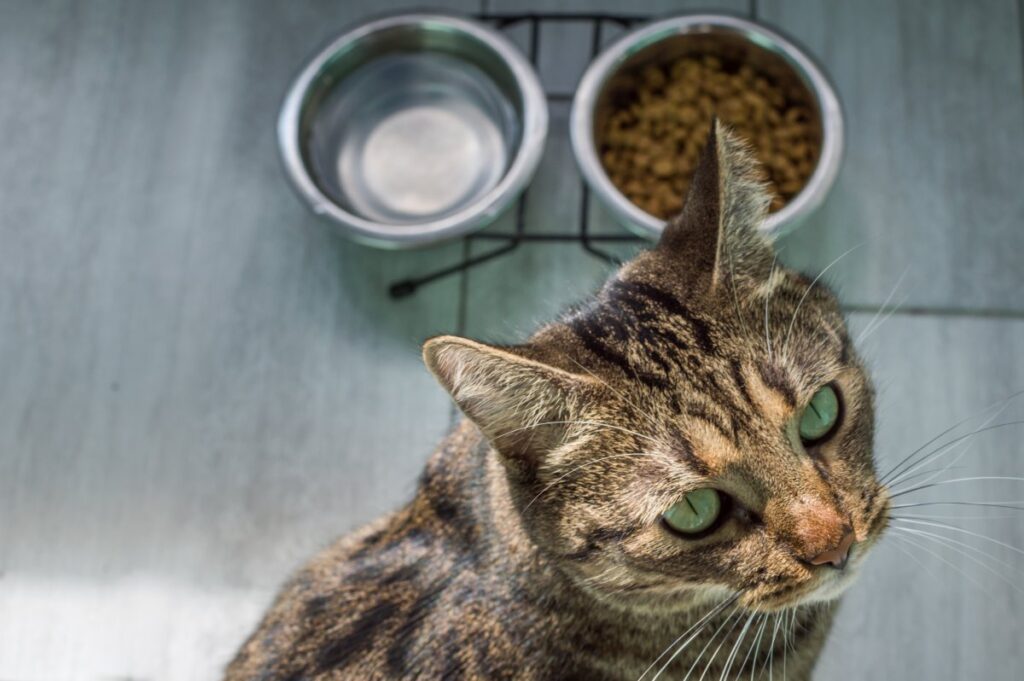
Food intolerance
Sometimes cats may not be allergic to a specific type of food. It will cause an allergic reaction, but it may not result from an allergy. It may be that food allergies in cats may be confused with food intolerance. Food intolerance is a medical term that refers to an abnormal response to a food that is not caused by the body’s immune system. This type of response can occur in pets of all ages and breeds.
Food intolerance can lead to various digestive upsets and diseases, including but not limited to food poisoning. Cats are intolerant of many ingredients and products. Histamine in spoiled fish, lactose intolerance, and getting into the garbage and eating things would trigger the intolerance mechanism in the cats.
Some cats with food intolerance may need a change in their diet. One option your cat’s doctor may recommend is to have it switch to an easily digestible food.
Diagnosis of food allergies
As mentioned above, each cat is unique. So it may have different levels of allergic reactions to the same amount of food. A cat’s level of reaction to food allergens or its allergy flare-up may be mild or severe, and the correct treatment can depend upon the cat’s reaction level. This variation of reaction makes it difficult to diagnose these types of diseases in cats.
Diagnosing and treating food allergies in cats involves an examination of the cat. Trials are carried out over several weeks to determine which ingredients are causing the flare-ups. This involves breaking down the cat’s current diet to figure out which part of the diet or which certain food causes this reaction among the cats. If symptoms return upon the removal and re-addition of the food, it means it is the cause of food allergies in cats.
Signs of Food Allergies
There are various signs and symptoms of food allergies in cats. Many of these symptoms overlap, meaning two different allergic reactions can have near-identical symptoms, making diagnosing a set allergy very difficult. The symptoms are often so similar that they may not even be an allergy; they could actually be a disease or sickness.
Diarrhea, vomiting, and uneasy bowel movements are common signs of food allergies in cats with skin inflammation such as rashes and sores following suit. The cat usually indicates this by an increase in scratching and skin biting. This further develops into dull and brittle fur, which eventually ends in fur loss.
Other symptoms include sneezing, wheezing and coughing, and discharge from the eyes and nose. If your cat is experiencing these symptoms, there is something wrong with it, and you should visit the vet immediately.
Food Associated with Allergies
To develop any sort of food allergy, cats must be exposed to the food first. Cats’ food allergies cannot set in the cat if it has never even touched the food it’s allergic to. There is various food to which cats may be allergic or intolerant. The first group of products that are not the first to come to mind is dairy products.
Cats drink milk at a young age, and it is often associated with cats in general. Still, in actuality, milk is not suitable for cats past a certain age. Certain types of meat can also trigger these allergic reactions in our feline friends. Finding out that meats such as chicken, beef & fish can cause food allergies in cats is surprising. Cats are carnivores. If they are allergic to meat, then what on earth can they eat?
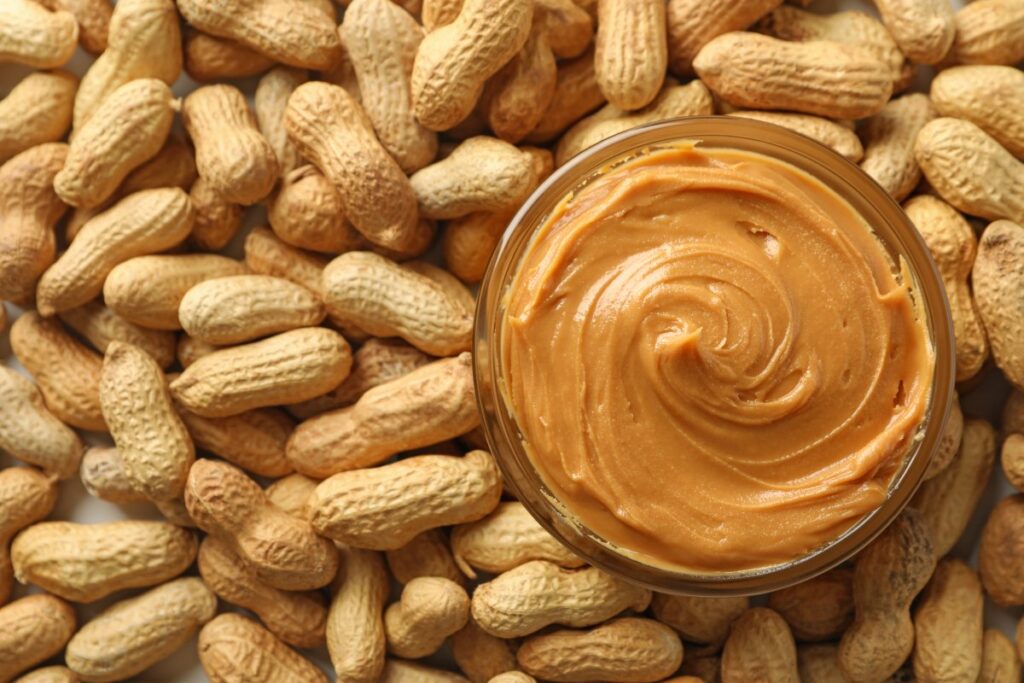
Peanut Butter Allergies
Feeding your cat peanuts is not a good idea, especially since they will not eat it since they cannot open the shells. Even if you did that for them, they would certainly not eat the hard round nut. Peanut butter, however, is something a cat may enjoy due to its sweet and savory taste. Many cat owners may give it to their cat as a treat. They do this unaware that peanut butter is one of the causes of food allergies in cats. Nut allergies are one of the three most common causes of itching in cats. Symptoms of nut allergies usually include rash, vomiting, and itching. The severity depends on the number of nuts that your cat has ingested. Like humans, even a small amount of exposure to nuts can cause an allergic reaction.
Meat Allergies
Meat allergies do not discriminate between the gender and breed of your cats; all of them are equally affected by the meat but to different extents. These allergies commonly take a while to form, so your cat most likely will not show any signs at least one year of age. Meat and other food allergies in cats are common because meat is found in almost all cat foods on the market.
A bag of dry cat kibble may contain several different types of meat such as beef, chicken, and fish which we have discussed cause allergic reactions to cats. This occurs once your cat has been eating that same food for many years. They build up a sensitivity to it, and the immune system starts to see it as a threat. Meat by-products are usually pet food filler in cheaper brands and consist of excess organs, tissues, and fats that humans won’t eat. These by-products suffer from poor quality control and can contain proteins your pet isn’t used to.
Lactose Intolerance
Like all mammals, when cats are born, they cannot eat solid foods until they grow up, so they rely on their mothers for milk. Young kittens have the enzymes needed by their bodies to break down the milk to digest it and get energy. Cats, in general, enjoy milk, and it has become common practice to leave out milk for cats to drink.
Unknown to the general public, cats, as they grow up, lose the ability to produce these enzymes, making them unable to digest milk. Essentially they become lactose intolerant and cannot drink milk and consume other dairy products. These products include yogurt and ice cream. This condition is confused for an allergic reaction which it is not. Lactose intolerance in cats often results in vomiting or a bad case of diarrhea.
Hydrolyzed Foods
A hydrolyzed protein diet is a special diet in which the proteins present in the diet are broken down to a size too small to be considered foreign protein/antigen by your cat’s immune system. This is usually in the form of smaller proteins called peptides and amino acids. Hydrolyzed diets can be purchased for veterinarian clinics.
They are often prescribed when to cats when suffering from food allergies. This is usually done during their dietary elimination trial, where they are accessing which part of the food your cat consumed had an allergic reaction.
This diet does not cure the allergies, which will still be present once the symptoms pass. This diet may not be as appealing to your car because it is less tasty and bitter. These diets may also have the side effect of diarrhea.

Allergy Diets
As we have discussed, food allergies in cats are very common. Almost every type of food will have an allergic effect to some degree. That being said, apart from hydrolyzed diet plans, there are no completely hypoallergenic diets. Hypoallergenic means that they will not cause allergies when eaten.
Cats can be allergic to pretty much any protein or carbohydrate ingredient found in the average tin can of pet food. Feeding a diet with duck or lamb will not prevent food allergies. It will only bring a delay in which your pet develops the allergy later on. There is no credible evidence that continually changing your pet’s diet ingredients can prevent food allergies. Still, it definitely can limit diet choices to try to diagnose allergenic food.
Best food for cats
The best foods for your cat are the ones that are protein-rich and contain the essential amino acids & fatty acids. Along with this, they must provide all the other nutrients the cat needs, such as calcium, vitamins, and phosphorus. Proteins can be found easily in meats, but other nutrients, not so much.
A balanced diet must be adopted by the cat and set by the owner, giving your cat an excellent nutritional value, all while avoiding any cat food allergy. This can be difficult as food allergies in cats are easy to come by. Owners should look for whole natural ingredients such as fruits and high-quality carbohydrates. While doing so, they should avoid cheaper brands that may fill the food with by-products and meats, which people tend to avoid.
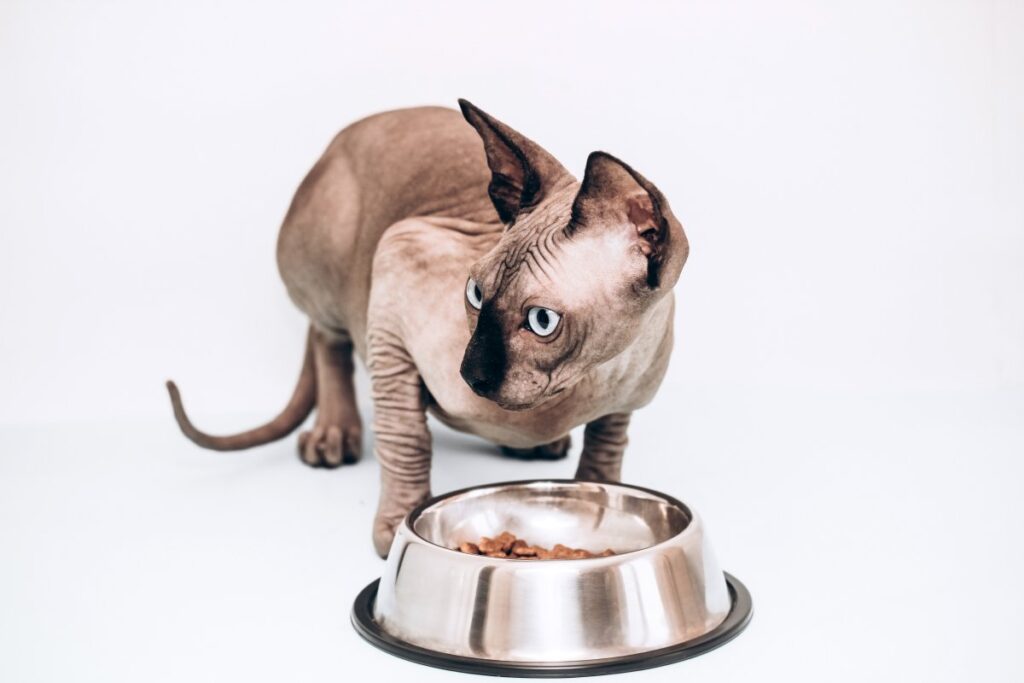
Treatment of food allergies
One thing to understand is that food allergies are not diseases. The same is for food allergies in cats. They are an actual response of the immune system of the feline’s body attempting to fight foreign protein; hence there is no cure for these reactions. They cannot be cured because there is simply nothing to cure at all. Instead, they are managed by avoiding foods that flare up the allergy.
Veterinarians can work together with owners in establishing a new diet that will provide similar relief from allergic symptoms. Every cat differs in the severity of its food allergies. Some cats may react severely to even the slightest trace of an allergen. In contrast, others may ingest massive amounts before showing any signs. Professionally, this can be avoided by assigning carefully controlled hypoallergenic foods and hydrolyzed diet.
Treatment at home
Food allergies in cats are challenging to diagnose, and one should always seek medical care before trying homemade medications and tricks. Once you have diagnosed the allergen food, the first step you can do is to completely remove it from your cat’s diet.
This can be especially hard if your cat is attached to a particular food brand for some time, but it is the best way to avoid food allergies in cats. Owners should monitor whether the symptoms have persisted even after the diet change and regularly inform their veterinarian.
To further reduce the stress on the poor cat, the owners can try different treatments to rid the cat of the symptoms. This means ointments for skin rashes and medication for discharge from the eyes and nose. Increase water intake if the cat has diarrhea.
Cats’ food allergies are extremely common, and cat food allergy symptoms are often the same, so seeking professional help is always a good option.

